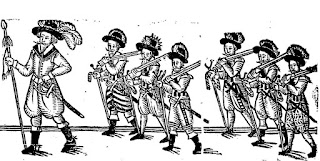MacGregor Highlanders
I must confess that I am really, really happy to have completed this unit. Not because I think they are stunningly good ( I know that they aren't); because they are one of the last planned unit of Highlanders that I intend to paint. That will be 144 teeny weeny Scots with checked fabric garments. Which is more than enough. And yes, before you ask this is the clan of Rob Roy MacGregor.
Like many Scots soldiers in the Wars their allegiance flip-flopped depending upon which Army was furthering their own cause.
What did this mean?
The 1617 Act of the Scottish Parliament stated:
"It was ordained that the name of MacGregor should be abolished and that the whole persons of that name should renounce their name and take some other name and that they nor none of their name and that they nor none of their posterity should call themselves Gregor or MacGregor under pain of death ... that any person or persons of the said clan who has already renounced their names or hereafter shall renounce their names or if any of their children or posterity shall at any time hereafter assume or take to themselves the name of Gregor or MacGregor ... that every such person or persons assuming or taking to themselves the said name ... shall incur the pain of death which pain shall be executed upon them without favour."
Those MacGregors that stayed behind in Scotland allied with the Macduggans, Mackinnons and MacFarlanes against the English, causing mischief in a number of minor raids against English targets in Scotland.
They would briefly reform when summoned by the Earl of Glencairn to fight for the Royalist cause (and somewhat coincidentally against their sworn enemies the Campbells) at the battle of Dalnaspidal in 1654.
After the Restoration Charles II removed the proscription of their name, but William of Orange reimposed it when he deposed Charles's brother James.














Nicely done.
ReplyDeleteTips hat. Thanks Dex. We'll not mention the fact that I have noticed some missing 'tartan' lines that need painting in. A job for later today methinks
Delete